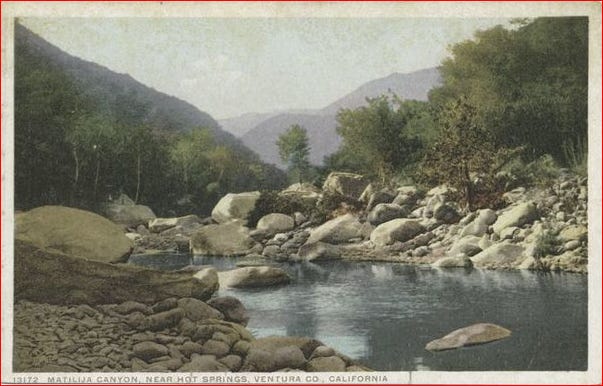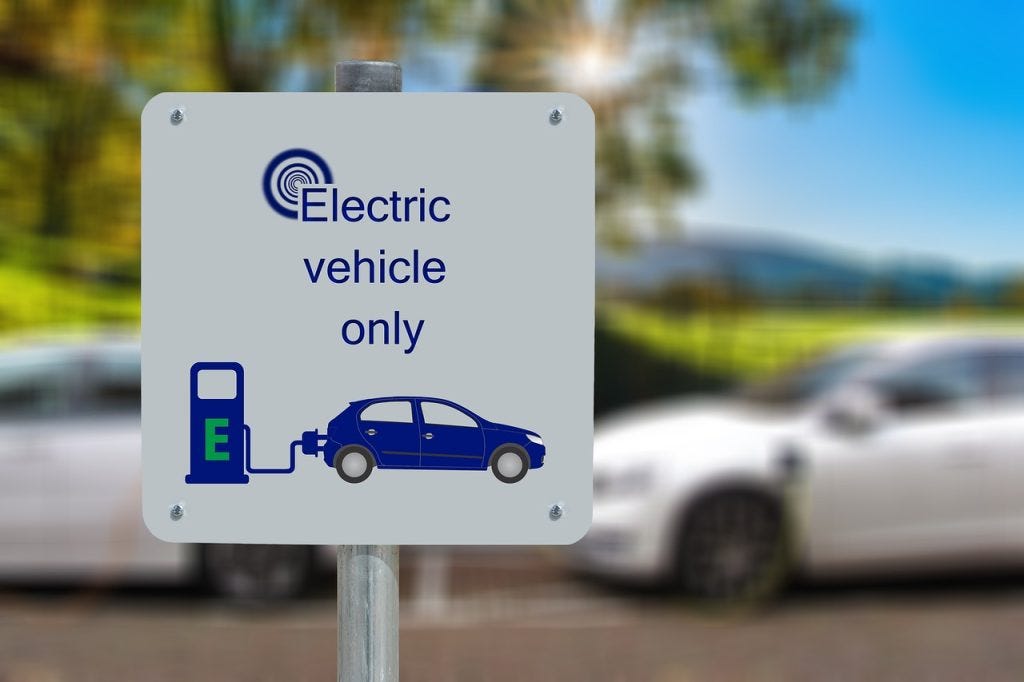Equinox Inquiry: Earth guardians ask why we are out of balance? Fire hazards of EV chargers & smart meters on hot springs sacred land
Guest post by Sarah Aminoff of Safe Tech International
Through-out millennia, the equal proportions of darkness and light (day and night) of the Equinoxes have served as a metaphor for balance and harmony. (Look up the exact time for your location here.)
Demands for the technology sector to recognize and respect the rights of nature and to protect human health are mounting. This includes confronting misguided and ungrounded ‘sustainability’ initiatives that are manifesting tremendous human rights violations. Here, Sarah Aminoff questions the practice of installing EV chargers and wireless smart meters in remote, fire-prone areas, on sacred land.
Earth guardians ask why we are out of balance? Fire hazards of EV chargers & smart meters on hot springs sacred land
by Sarah Aminoff of Safe Tech International (image courtesy Pixabay)
Summary at a Glance
• Hot springs guests go for a digital detox only to find smart meters on cottages and an EV charger in the forest.
• A complaint letter for fire risk was cosigned by several safe tech organizations. asking EV charger to be moved closer to the fire station, and the smart meters to be replaced with analog meters.
• Charging EVs are a ticking time bomb with lithium anomalies, undercharging, overcharging, and thermal runaway.
• Investigations show 30% of EV fires occur while charging.
• EV fires worldwide occur in parking garages, homes and bus depots.
• Fires reach 5,000 degrees Fahrenheit compared with 1,500 degrees in a gas car fire and up to 40,000 gallons of water are used to put out EV fires.
• Tesla-semi fire in the Sierra Nevada emitted smoke for 16 hours while Hazmat officials cleared area half a mile.
• How are EVs considered zero emission if charging stations use diesel and manufacturing requires mining of rare earth minerals?
Here’s Our Complaint Letter from Safe Tech Advocates
To hot springs community:
We love this sacred healing place with its legacy dating back hundreds of years. All members of this region’s Native people went to the hot springs for safety, to enjoy the waters, and abide in peace. This area used to be a Victorian resort, a hunting lodge, and more. In modern times, the hot springs has taken on a sacred trust to be the guardians of the land, and have agreed to honor the legacy of the ancient native protectors.
Then came the wildfires, and it took years to rebuild this paradise. This summer, we saw an EV charger in the middle of the forest in an area with burnt out trees from the last wildfire. People love your place but share, “The one thing that certainly is transparent about EVs is the fire hazard.” Please relocate the EV charger to a safer place given any fire can spread like wildfire. Please provide guests with a low Electromagnetic Radiation (EMF) option for fire safety. Please consider the responsible thing and investigate EVs, charging concerns and smart meters.
The hot springs wrote back only few words – they take our concerns seriously. The EV charger in the forest haunts me, as if there is no escaping the fire controversies of tech, even in the wilderness, KCRA reported on Sierra Nevada’s latest EV fire in August, 2024: Hazmat teams stood by during a Tesla Semi fire.
Reinette Senum, former Nevada City mayor, wrote: “Tesla big rig recently crashed into a tree on Interstate 80 close to my hometown, Nevada City, sparking a fire that closed the highway for over 15 hours. Yes, you heard that right—an electric truck… turned into a flaming beacon of what could go wrong. Hazmat teams stood by, helpless, as the battery burned, emitting toxic smoke… Fortunately, this incident didn’t spark a cataclysmic forest fire like the one currently raging near Chico, known as the Park Fire- the fourth largest wildfire in California, which has already consumed nearly 500,000 acres and continues to burn.”
EVs are up to 30% more likely to catch on fire while charging. What would ancestors hundreds of years ago have said?
Are EVs really clean, free, safe, and sustainable? Annie Leonard, in the Story of Electronics, talks about increased mining, industrial manufacturing, habitat destruction, and the creation of toxic waste. These externalities are especially true for EVs.
EV charger fires command attention worldwide:
• 25 buses destroyed at a bus depot in Germany.
• EV fires at US charging stations: California, Colorado, Louisiana and Pennsylvania, Florida, and Nashville Tennessee.
“NFL wide receiver Randall Cobb and his family survived a house fire that apparently started with their Tesla charger in their garage.”
NY Post
“A Mercedes EV caught on fire recently,” Katie Singer shares. “Two and a half days after its owner parked a Mercedes EV in an underground parking lot, it caught fire, injured 23 people with toxic smoke inhalation and destroyed 140 other cars.”
The list of fires goes on and on. Just google: “why do EV chargers fail”, or “why EV charging stations are bad”. According to research, “The number of EV battery fires that occur while connected to EV charging sits in the range of 18% to 30%.
EV fires are less frequent than gas cars according to Consumer Reports, yet insurers claim Hybrid fires come in number one. Autocar UK explains EV fires as “incredibly difficult to put out.”
The sustainability numbers don’t add up.
If 40,000 water gallons are needed for EV fires, how are EVs considered sustainable?
Fire fighters remain on the scene in New Jersey more than seven hours to make sure the battery doesn’t reignite and go into thermal runaway (you think the battery fire is out, but it isn’t).
Lithium battery may reignite hours, days or weeks later (Tesla in a junkyard),
Fires in electric vehicles… can reach 5,000 degrees Fahrenheit, compared with 1,500 degrees in a gas-powered car fire.”
Downtown LA Lawyers are among many lawyers that put on their Physicist hat to explain about EV batteries: “thermal runaway are fires from defective failing batteries, it can release a large amount of noxious and toxic gasses, catch on fire, jet out flames or even explode on the spot. These injuries can be serious and even fatal, causing death to the person using the charging station.”
Why do we need lawyers to unpack the science so we can understand the dangers we were not told about by industry scientists or our regulatory agencies? “An electric car can be a high hazard when it is charging. Many factors can make it a ticking time bomb that will catch fire quite easily,” i.e., not charging the battery enough or over charging it, not keeping the car in the shade, here’s a complete list of many potential battery problems of what can go wrong:
EVs are the largest source of demand for lithium, and lithium mining means dire consequences for water, food supplies, biodiversity, and Indigenous rights. How will the electrical grid, already at capacity, be able to handle millions more EVs? The more EVs that require electricity, the more we dedicate land use to power generation devices.
The dirty secret behind EVs are the tens of thousands of children in the Congo, knee-deep, mining for cobalt used for EV batteries, toxic to touch, toxic to breathe, the ore can have traces of radioactive uranium. The demand is so great, companies can’t dig it out fast enough. What would the ancient natives, say about children mining? Natives understood that all parts of an ecosystem connect – children, animals, and rock are dependent on each other in the ecological niche. Eco-philosopher John Muir stated:
“Indians walk softly and hurt the landscape hardly more than birds or squirrels.”
Leave no trace, preserve for seven generations, don’t ask why this land is out of balance, ask why are we out of balance? Our letter to the hot springs cites: The smart meters on cottages, are yet another fire/safety concern that could have been avoided with analog meters. Is it true smart electrical meters can cause fires? Yes. Fires have been reported after smart meter installations, along with shorting or burning-out of appliances and electronics. Are commercial establishments required to have smart meters? Please help us understand, given smart meter residential opt-outs. Smart digital meters lack adequate surge arrestors and circuit breakers to protect electronics from extreme voltage surges. Surge arrestors prevent fires and electrical equipment damage.
See Katie Singer’s substack for a deep dive – why all things smart are not necessarily environmentally safe. “Electrical technician Sean Polacik explains to Keith Cutter that smart meters aren’t meters. They’re data-collecting computers. Contrast this to traditional analog meters that measured electricity use, worked as surge protectors, and did not generate dirty electricity.”
Research shows, “Analog meters are safer, do not emit RF, and do not contain any flammable electronic parts, nor do they have a switching mode power supply (that will create RF frequencies that enter the electrical wiring of the house/electrical. More on the science around smart meter fires can be found here, here and here.
Its not hard to provide a low EMF cottage, here’s how:
Many people want to avoid exposure to artificial radiation, and we applaud the no electronics rule. No doubt this hot spring is in alignment with providing a low electromagnetic radiation (EMF) cottage, please consider retrofitting cottages with analog meters, or Bill Bathgate’s DE Filter Iron Maiden to reduce pulsed radio frequency? We are curious how many hot springs guests were EMF-disabled prior to the smart meter rollout? Many hope for a safe cottage, especially those with mobility issues. Under the ADA, analog meters would likely be allowed. Please do the right thing.
Signed by water/forest protectors, activists and community change agents, the leaders of safe tech organizations, and ancestral guardians of the land – (we are also signing on their behalf)
“[] sustainability numbers don’t add up.”




